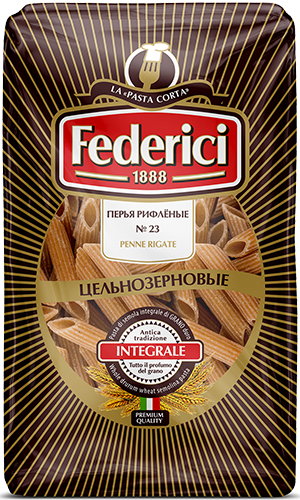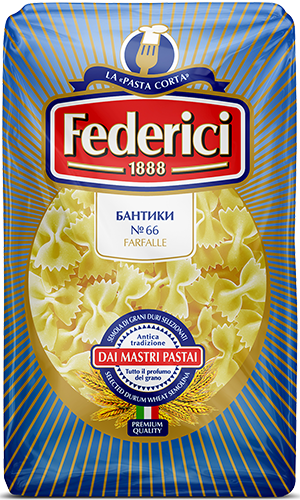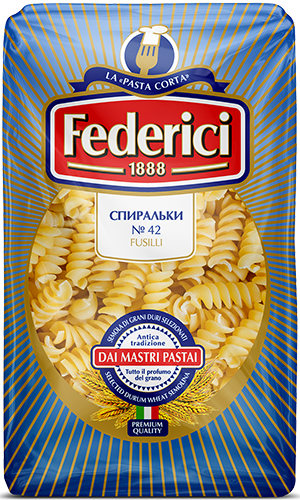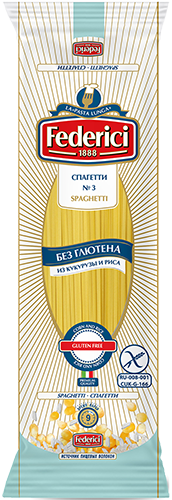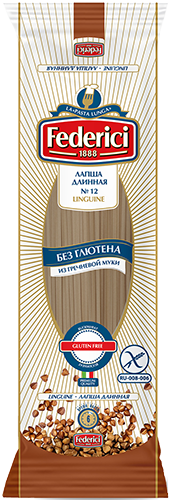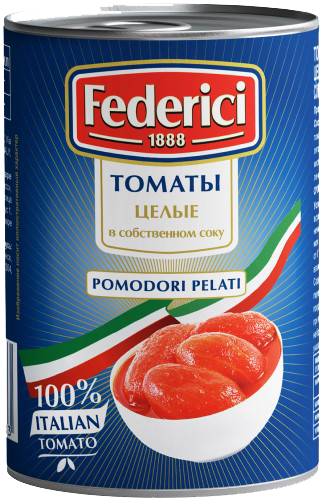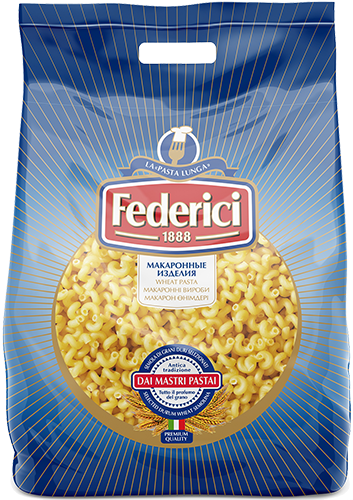


Pasta, primarily made from flour, is one of the most popular foods worldwide. It’s not only delicious but also healthy. In this article, we’ll share 7 health and nutritional benefits of pasta.
- Energy Source. Pasta contains carbohydrates, which are the body’s main source of energy. They provide a quick and long-term supply of energy needed for physical and mental tasks.
Nutrient Rich. Pasta contains vitamins B1 and B2, which help us convert food into energy, as well as selenium, an antioxidant that protects cells from damage. It’s also an excellent source of folate, iron, and other essential micronutrients. - Low Fat. Pasta contains very little fat, making it ideal for those watching their weight. It also promotes a feeling of fullness, which helps control appetite and prevent overeating.
- Rich in Fiber. Pasta contains a large amount of fiber, which promotes healthy digestion and prevents constipation. Fiber also helps lower blood cholesterol and control sugar levels.
- Cooking versatility. Pasta can be prepared in a variety of ways and served with a variety of sauces and toppings, allowing you to add variety to your diet and experiment with flavors.
- Light dinner. Pasta is an excellent option for a light and quick dinner. It cooks quickly and provides essential nutrients.
- Family-friendly. Pasta is a versatile food that can be prepared for the whole family and satisfy different preferences and needs. It is also readily available and affordable, making it a great choice for most families.
Health and nutritional benefits of pasta
- Pasta is rich in carbohydrates, making it an excellent source of energy. The carbohydrates in pasta are contained in the form of starch, which is gradually broken down in the body and provides a stable energy level.

- Pasta contains fiber, which promotes normal digestion and prevents constipation. Fiber also increases feelings of satiety, which helps control appetite and prevent overeating.
The protein found in pasta is an important building block for the body. It not only helps restore and maintain muscle, but also strengthens bones and promotes the normal functioning of organs and systems. - Pasta contains B vitamins, which play an important role in metabolism. They help the body convert food into energy and maintain a healthy nervous system.
- Pasta is a low-calorie food, making it beneficial for those trying to maintain a healthy weight. It contains fewer calories than other foods, such as bread and potatoes, so it helps control calorie intake without compromising nutritional value.
- Pasta contains many micronutrients, such as iron, magnesium, zinc, and copper, which are essential for normal bodily function. They are involved in many processes, including blood formation, nervous system function, and maintaining healthy skin and hair.
- Pasta is the basis for many dishes across various cuisines. It pairs easily with a variety of ingredients, such as vegetables, meat, fish, and cheese, making it a versatile food. The ability to add different sauces and spices allows pasta to vary its flavor and create a variety of dishes.
Pasta as a Source of Energy
Pasta is an excellent source of energy due to its high carbohydrate content. Carbohydrates are the body’s primary source of nutritional energy. They effectively satisfy the energy needs needed for work and an active lifestyle.
The carbohydrates in pasta provide the body with quick energy for physical and mental activity. They effectively replenish glycogen stores in muscles and the liver, helping to maintain optimal energy levels throughout the day.
Another advantage of pasta as an energy source is that it is digested slowly, helping to maintain stable blood sugar levels and prevent sudden energy fluctuations. This helps maintain high productivity, concentration, and stamina throughout the day.
Carbohydrates in Pasta

Pasta is a source of complex carbohydrates, which are the body’s primary source of energy. These carbohydrates are gradually digested and provide a steady source of energy over a long period of time.
Pasta also contains fiber, which promotes normal digestion and maintains a healthy intestinal lining. Fiber helps prevent constipation and reduces the risk of chronic intestinal diseases such as diverticulosis and colon cancer.
The carbohydrates in pasta are also an important source of dietary fiber, which has a positive impact on overall health. Dietary fiber helps lower blood cholesterol, normalize blood sugar levels, and promote healthy weight.
Pasta contains B vitamins, which play an important role in metabolism and maintaining a healthy nervous system. B vitamins also help improve the condition of skin, hair, and nails.
Furthermore, pasta is a source of minerals such as iron, magnesium, and zinc. These minerals are essential for maintaining healthy bones, normalizing blood pressure, and boosting the body’s immune system.
However, it’s important to consume pasta wisely and in moderation, taking into account your individual needs. Pasta is not a primary source of nutrition and should be included in the diet in combination with other foods rich in protein, fat, and dietary fiber.
Fiber Content

Pasta contains a large amount of fiber, which plays an important role in maintaining good health. Fiber improves digestive function, helping prevent constipation and other stomach problems. It also helps lower blood cholesterol and maintain a healthy weight.
It’s important to note that fiber is only found in whole-grain pasta, as it leaves layers within the grain, while these layers are removed during the production of white pasta.
Consuming whole-grain pasta, which contains fiber, provides the body with additional dietary fiber, which promotes normal metabolism, improves bowel function, increases feelings of satiety, and helps control blood sugar levels.
Fiber also detoxifies the body, improves nutrient absorption, promotes the growth of beneficial microflora in the gut, and helps prevent the development of cancer cells.
Pasta is good for your skin
Pasta is not only a delicious dish but also a healthy product for our skin. Thanks to its complex of vitamins and minerals, pasta can positively impact skin tissue, improving its condition.
One of the main components of pasta is carbohydrates, which provide energy for skin cells. They keep the epidermis healthy and firm and promote collagen production, which is responsible for skin elasticity and youthfulness.
Furthermore, pasta contains vitamin E, a powerful antioxidant. It helps protect the skin from the harmful effects of free radicals, preventing aging and cell damage.
Vitamin B3, or niacin, is also present in pasta and promotes improved skin condition. It helps reduce inflammation, improves blood circulation, and stimulates cell regeneration.
Another important component of pasta is zinc, which is essential for healthy skin. Zinc helps regulate sebum production, evens out skin tone, and accelerates the healing of wounds and acne.
Therefore, the toothpaste is a beneficial product for the skin. It contains carbohydrates, vitamin E, vitamin B3, and zinc, which help improve skin condition, protect against aging and inflammation, moisturize, and improve elasticity.
Biotin in Toothpaste
Biotin, also known as vitamin H, is an essential nutrient found in the toothpaste. Biotin helps the body convert food into energy and maintain healthy hair, nails, and skin.
One way to get biotin is by consuming toothpaste, which contains a significant amount of this vitamin. The biotin in the toothpaste helps strengthen hair and nails, preventing breakage and making them stronger.
Furthermore, the biotin in the toothpaste helps maintain healthy skin. It promotes skin cell renewal, making skin firmer and smoother. Biotin also plays a role in the formation of collagen, a key component of skin, giving it firmness and elasticity.
The biotin in the paste also plays an important role in metabolism. It helps the body convert carbohydrates, fats, and proteins into energy, which is necessary for the normal functioning of organs and tissues. Biotin is also involved in the formation of hemoglobin, which carries oxygen throughout the body.
Selenium Content
- Rich Sources of Selenium: The best sources of selenium are nuts, especially Brazil nuts, meat (beef, pork, poultry), seafood (oysters, salmon, shrimp), eggs, beans, rice, lentils, and wheat.
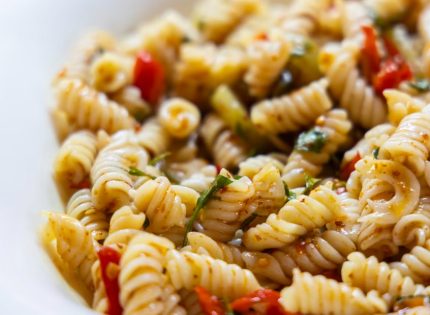
- Selenium’s Functions in the Body: Selenium is an essential nutrient because it is involved in the functioning of various enzymes and antioxidant systems. It helps strengthen the immune system, improves skin and hair, and supports thyroid health.
- Protection from Oxidative Stress: Selenium is a powerful antioxidant that protects cells from damage caused by free radicals. It helps slow the aging process and may reduce the risk of various diseases.
- Heart Health: Selenium helps strengthen the cardiovascular system and reduce the risk of cardiovascular disease. It helps normalize cholesterol levels, improves heart function, and maintains normal blood pressure. Importance for Men’s Health: Selenium plays a vital role in supporting prostate health and reproductive function in men. Its levels in the body can impact spermatogenesis and semen quality.
- Importance for Liver Health: Selenium is involved in the metabolism of alcohol and other toxic substances, has a beneficial effect on liver function, and helps cleanse the liver of harmful substances. It also reduces the risk of liver diseases such as cirrhosis and hepatitis.
- Dosage and Recommendations: The recommended selenium intake for adults is approximately 55 micrograms per day. However, the dosage may vary depending on age, gender, physical activity, and health status. Excessive selenium consumption can also be harmful, so it is important to follow the recommendations of a doctor or nutritionist.
Pasta – a Source of Vitamins
Pasta is a source of various vitamins and microelements necessary for normal body function. It contains vitamin B, which helps improve nervous system function and metabolism.
The toothpaste also contains vitamin E, a powerful antioxidant that protects the body’s cells from free radical damage. It helps strengthen the immune system and slows the aging process.
The toothpaste is also rich in vitamin K, which is involved in blood clotting and maintains bone health. A lack of this vitamin can cause bleeding and weakened bone tissue.
Furthermore, the toothpaste contains vitamin C, which reduces the risk of colds and increases the body’s resistance to infections. It also promotes healthy gums and teeth.
B Vitamins
B vitamins are important for maintaining good health and nutrition. They play a key role in the body’s metabolism and aid in the absorption of nutrients.
B vitamins consist of eight different vitamins: B1 (thiamine), B2 (riboflavin), B3 (niacin), B5 (pantothenic acid), B6 (pyridoxine), B7 (biotin), B9 (folic acid), and B12 (cobalamin).
B vitamins are typically found in meals, pasta, and cereals. They are found in many foods, such as meat, fish, eggs, nuts, grains, and dairy products.
Vitamin B1 (thiamine) helps produce energy from food and supports the nervous system. Vitamin B2 (riboflavin) plays an important role in metabolism and maintains healthy skin.
Vitamin B3 (niacin) also aids in metabolism and helps maintain digestive and nervous system health. Vitamins B5 (pantothenic acid) and B6 (pyridoxine) are also important for metabolism and nervous system health.
Vitamin B7 (biotin) helps the body process food and plays a vital role in healthy skin, hair, and nails. Vitamin B9 (folic acid) is essential for growth and development, especially for fetal development during pregnancy.
Vitamin B12 (cobalamin) is necessary for red blood cell formation and nervous system health. It is found in animal products such as meat, fish, eggs and dairy products.
Our products
Мы стремимся предложить Вам наилучший сервис при работе с нашим сайтом. Для этого мы собираем и храним информацию о Вашем посещении сайта. Так называемые cookies. Файлы cookies не собирают и не хранят никакую личную информацию о Вас. Используя этот сайт, Вы даете согласие на использование cookies. На данном этапе Вы можете отказаться от использования cookies, настроив необходимые параметры в своем браузере.
